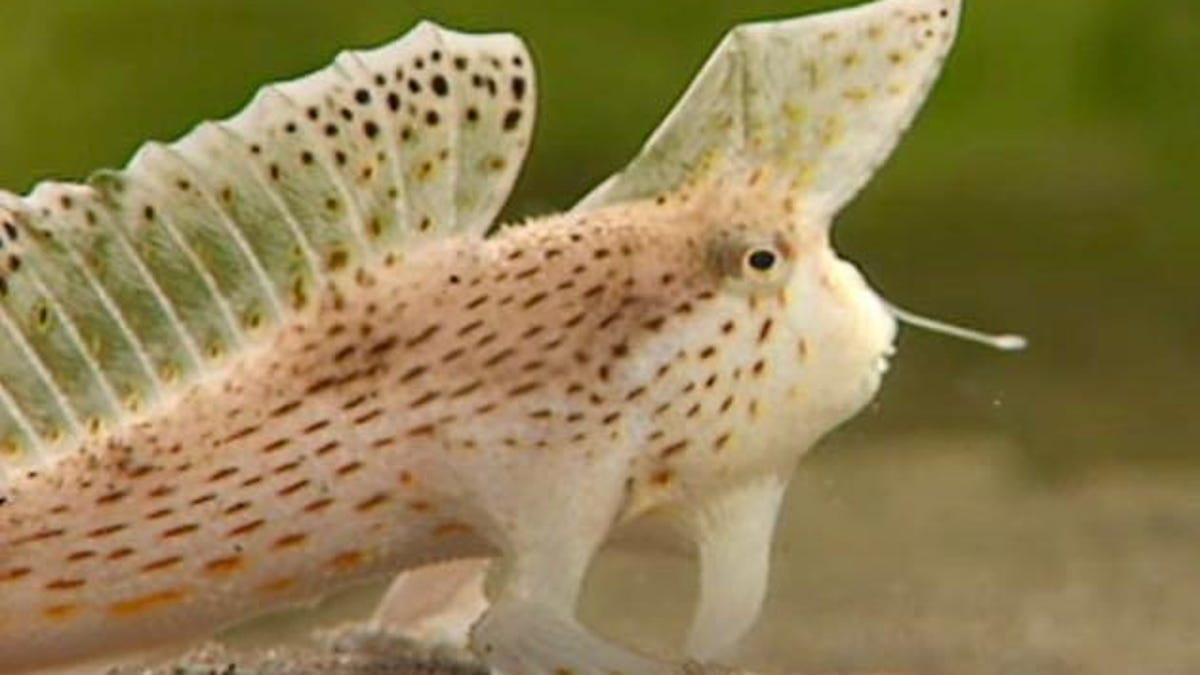Bizarre smooth handfish declared first modern-day marine fish extinction
The surviving 13 species of handfish that walk on their fins are also in danger of dying out, according to scientists.

Handfish are unique in that they can appear to "walk" across the seabed on fins that look a bit like tiny hands.
An unusual fish that had bulging eyes and walked on its fins has been declared extinct by scientists. The smooth handfish is considered the first modern marine fish on record to completely die out, according to the International Union for Conservation of Nature.
The smooth handfish (sympterichthys unipennis) is related to deep-sea anglerfish. It was one of the first fish species to be scientifically documented from Australia -- in 1802 by French naturalist François Péron. Dwelling mainly in southeastern Australian waters, handfish are bottom-dwellers that use their highly modified pectoral fins to walk along the seabed.
Péron collected the only specimen of the smooth handfish 200 years ago. Because no other examples of the smooth handfish have been spotted during extensive ocean surveys, the fish was declared extinct.
Handfish are unique in that they give birth to fully formed juveniles directly on the seabed instead of having a midwater stage for their larvae. This makes them more vulnerable to being fished or having their breeding habitats disturbed. Handfish also have a habit of staying in specific areas, instead of migrating to safer spots.
"They spend most of their time sitting on the seabed, with an occasional flap for a few meters if they're disturbed," Graham Edgar, a marine ecologist at the University of Tasmania, told The Smithsonian in an interview for the July issue. "As they lack a larval stage, they are unable to disperse to new locations -- and consequently, handfish populations are very localized and vulnerable to threats."
A well-known scallop fishery that operated in the Tasmanian region until 1967 led to the deaths of many handfish, because it dredged the fishes' habitat and fishermen threw away fish that were caught accidentally, the International Union for Conservation of Nature said.
The extinction of the smooth handfish, as well as the current threat to the other 13 surviving handfish species, can be attributed to historical bottom fishing activity, pollution and destruction of spawning habitat, the IUCN said in a statement.
Red #handfish raised in captivity at @IMASUTAS @UTAS_ as part of a #conservation strategy to bolster wild populations: 7mo old, 20 mm long. (📷 J. Stuart-Smith) #endangeredspecies pic.twitter.com/hV6cT4Abjz
— Handfish Conservation Project (@HandfishProject) June 10, 2020
Though there's still hope for the remaining species of handfish, Handfish Conservation Project reported in June that a team of researchers from the Institute for Marine & Antarctic Studies at the University of Tasmania is "raising red handfish in captivity as part of a conservation strategy to bolster wild populations."
In addition to the smooth handfish, IUCN's recent Red List of Threatened Species also declared the Bonin pipistrelle bat, splendid poison frog, Jalpa false brook salamander and spined dwarf mantis as recent extinctions.

